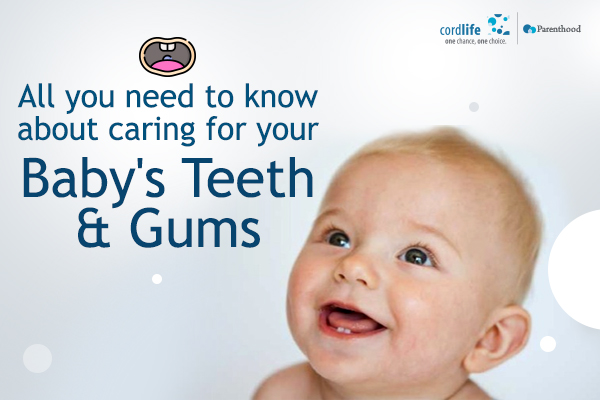Table of Contents
Babies are born with their primary teeth hidden in the jaws. At around six months of age, the teeth begin to appear. Even though it takes time for the teeth to appear, you should not delay dental care. Dentists suggest that dental and gum care should begin as early as possible. Establishing good dental practices help in having good dental health throughout life. The baby also gets habituated to a dental cleaning routine if you start early on.
Are you wondering what’s the point since temporary baby teeth will fall out anyway? The reason is that cleaning the gums and teeth properly can help with the child’s nutrition and speech development. Clean temporary teeth give way to healthy permanent teeth. Decayed temporary teeth may interfere with the shape of the permanent teeth and they may come out crooked. Baby teeth also define the shape of your child’s face and make it easier for him to talk properly. Decayed temporary tooth damages the underlying permanent tooth. Moreover, a decayed tooth can cause pain and discomfort to the child.
Dental Care at Different Ages
Dental care depends on the age of the baby. Infants need specific care. Babies who are going through the teething phase need extra care. Once the tooth starts falling off they need a different kind of care.
0-6 Months
This is the stage when no actual tooth is visible. However, that doesn’t mean you shouldn’t clean the mouth. Try to clean the gums after each feed. This will prevent the bacteria to stick to the gums that may cause plaque and cause damage to the temporary teeth when they come out. Do not use a toothbrush at this stage. Just take a damp cloth or gauze pad over your finger and wipe the gum carefully. Be mindful to clean every corner of the mouth. If your baby doesn’t like cleaning the gums try to divert his attention by singing a song or letting him play with a toy. Once you establish a habit of cleaning, the baby will also get used to it.
6-12 Months
The first tooth usually appears at 6 months. This phase is known as teething. The gum opens up and allows the teeth to appear. The baby usually feels uncomfortable during this phase. Babies usually rub their gums with their hands at this stage. Just keep the hands clean. A child may cry more during teething. He may not feed properly, and may even show diarrhea or fever-like symptoms. Do not worry if that happens. Give him sliced frozen cucumber or carrots to suck. This will ease their discomfort. Keep cleaning the gums with a damp cloth or gauze. Once the tooth arrives make sure to clean the front and back end of the tooth properly.
12- 24 Months
By the time a baby turns 2-year-old, he should have 20 teeth. Teach your child to brush their teeth with a soft toothbrush twice a day. Use fluoride toothpaste. Put only a pea-sized amount of toothpaste on the brush. Keep the toothbrush clean and change it every month. Avoid sugary foods, pacifiers or letting the child fall asleep while feeding on a bottle to avoid tooth decay.
